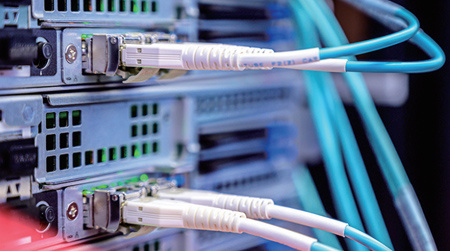01
2025
-
06
Demystifying Fiber Optic Splitters: Your FAQ Guide
Understanding Fiber Optic Splitters
Have you ever wondered how data travels at lightning speed across vast distances? Enter the fiber optic splitter, a nifty little device that plays a crucial role in modern networking. These splitters are essential in distributing optical signals to multiple outputs, making them a staple in telecommunications and broadband networks. But wait, what exactly do they do? And why should you care? Let’s dive into the nitty-gritty!
What is a Fiber Optic Splitter?
Simply put, a fiber optic splitter is a passive device that divides a single optical signal into multiple outputs. Think of it like a traffic cop directing cars at a busy intersection—it ensures that data flows smoothly to various locations without bottlenecks. Generally, these splitters come in two flavors: 1xN or 2xN, where N indicates the number of outputs. So, if you've got a 1x8 splitter, it takes one incoming signal and splits it into eight separate paths. Pretty cool, right?
Why Use a Fiber Optic Splitter?
Here’s the kicker: using a fiber optic splitter can significantly enhance your network's performance. By allowing multiple users to share a single fiber line, it reduces the need for extensive cabling, saving both time and money. Additionally, these splitters are known for their reliability and low signal loss—essential factors when you're trying to maintain fast internet speeds.
Common Applications
So, where do you typically find a fiber optic splitter in action? They’re commonly used in:
- Telecommunications: Distributing signals to various subscribers.
- Data Centers: Efficiently managing data traffic.
- Broadcasting: Sending signals to multiple broadcasting stations.
Frequently Asked Questions
Now that you’re in the know, let’s tackle some common questions about fiber optic splitters:
1. How do I choose the right splitter?
Good question! The right splitter largely depends on your network requirements. Consider the number of outputs you need, the type of signal, and the distance the signal needs to travel. It’s always wise to consult a professional if you’re unsure.
2. Are there any downsides?
While fiber optic splitters are fantastic, they aren’t without their quirks. The most notable drawback is potential signal loss. Each split will lead to some degradation of the signal, so it’s important to choose high-quality equipment to minimize this effect.
3. Can I use a splitter with any fiber optic cable?
Not exactly! It’s crucial to ensure compatibility between your splitter and the type of fiber optic cable you’re using—be it single-mode or multi-mode. Using the wrong combination might lead to suboptimal performance.
Final Thoughts
In a nutshell, fiber optic splitters are the unsung heroes of modern networking. They enable seamless data transmission, cut down on cabling costs, and are remarkably efficient. So, the next time you’re surfing the internet or streaming your favorite show, you might just be benefiting from the magic of a fiber optic splitter!
Ready to upgrade your network? Don’t hesitate to reach out to a local provider and explore your options. After all, in this fast-paced digital world, keeping your connection strong is key!
Relevant news
CONTACT US
Add: No.1 Yonghe Third Road, Industrial Functional Zone, Chengdong Street, Yueqing City, Wenzhou City, Zhejiang Province
Tel: +86-577-62315998
Wechat : +86-15067871794
Fax: +86-577-62328331
E-mail: bonnie.chen@ouyahua.com











